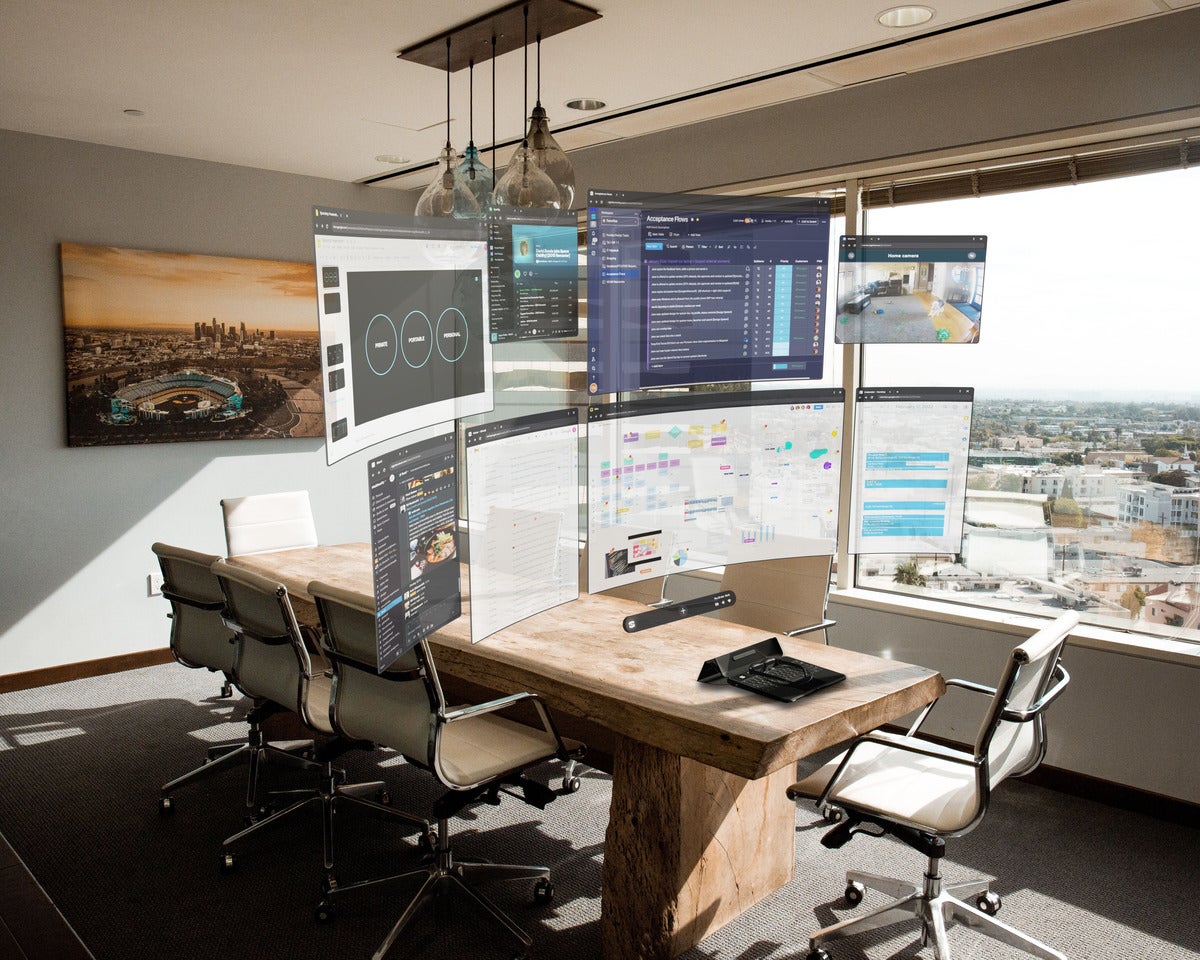Here comes an entirely new kind of computer.
Events like this don’t happen often. So, we should all stop and marvel at the emergence of what I call the ARPC — the “augmented reality PC.”
The “form factor” solves the decades-old desire to maximize screen size while minimizing hardware size.
And it’s ideal for the age of remote work, digital nomad living, workcations, bleisure travel, staybaticals, hot-desking, hoteling, and every other future-of-work neologism that has emerged since the Covid plague.
Here’s the concept: You have a regular computer but with no physical display. Instead, you wear augmented reality glasses, and the display is virtual. That means you can have a display that’s gigantic with a computer that can be the size of an ordinary laptop.
This kind of PC will probably become very common in the future. It’s actually possible to buy one today. And Apple, of all companies, may offer one soon. Here’s what you need to know.
The fictional ARPC
Virtual reality and augmented reality PCs have been around for decades in fiction. Ernest Cline’s Ready Player One imagined students putting on VR goggles, entering into a virtual world, and in that world, sitting at desks in front of screen. Iron Man had all kinds of holographic displays that floated in air.
(When rolling out his “metaverse” initiative, Meta CEO Mark Zuckerberg suggested that instead of going to an office, we’d all just strap on goggles and go to a VR office where everything is virtual, including the computer.)
While the fantasy has been around for decades, the reality has been around for less than a month.
The rise of the ARPC
A company called Sightful (an Israeli startup formerly known as Multinarity) recently released its Spacetop device, which it categorizes as an “AR laptop.” The physical hardware is about the size and weight of a laptop. The virtual display is a 100-in. screen.
The device was designed by engineers poached from Apple, Microsoft, and Magic Leap. (CEO Amir Berliner and COO Tomer Kahan both worked at Magic Leap.)
Sightful’s AR device
Wistron makes the guts of the computer, Nreal supplies the glasses, and Sightful designed the spacial environment, which it calls “Canvas.”
Anyone watching the company’s concept video will understand the value immediately.
Sightful’s published photos feature nomads, including a woman living the #vanlife lifestyle, and somebody using a giant virtual screen on a sailboat. They also imagine people using the Spacetop from home offices and regular offices.
Anyone can apply to purchase one of 1,000 units, which are for sale at $2,000 each. The company will choose which “enthusiastic early adopters” get to buy one. Anyone who wears prescription glasses can get the headsets customized to their prescription at no charge. The units will ship in July, according to the company.
The hardware and software choices are good. It’s more like a Chromebook, and…
2023-06-04 05:56:34
Source from www.computerworld.com
